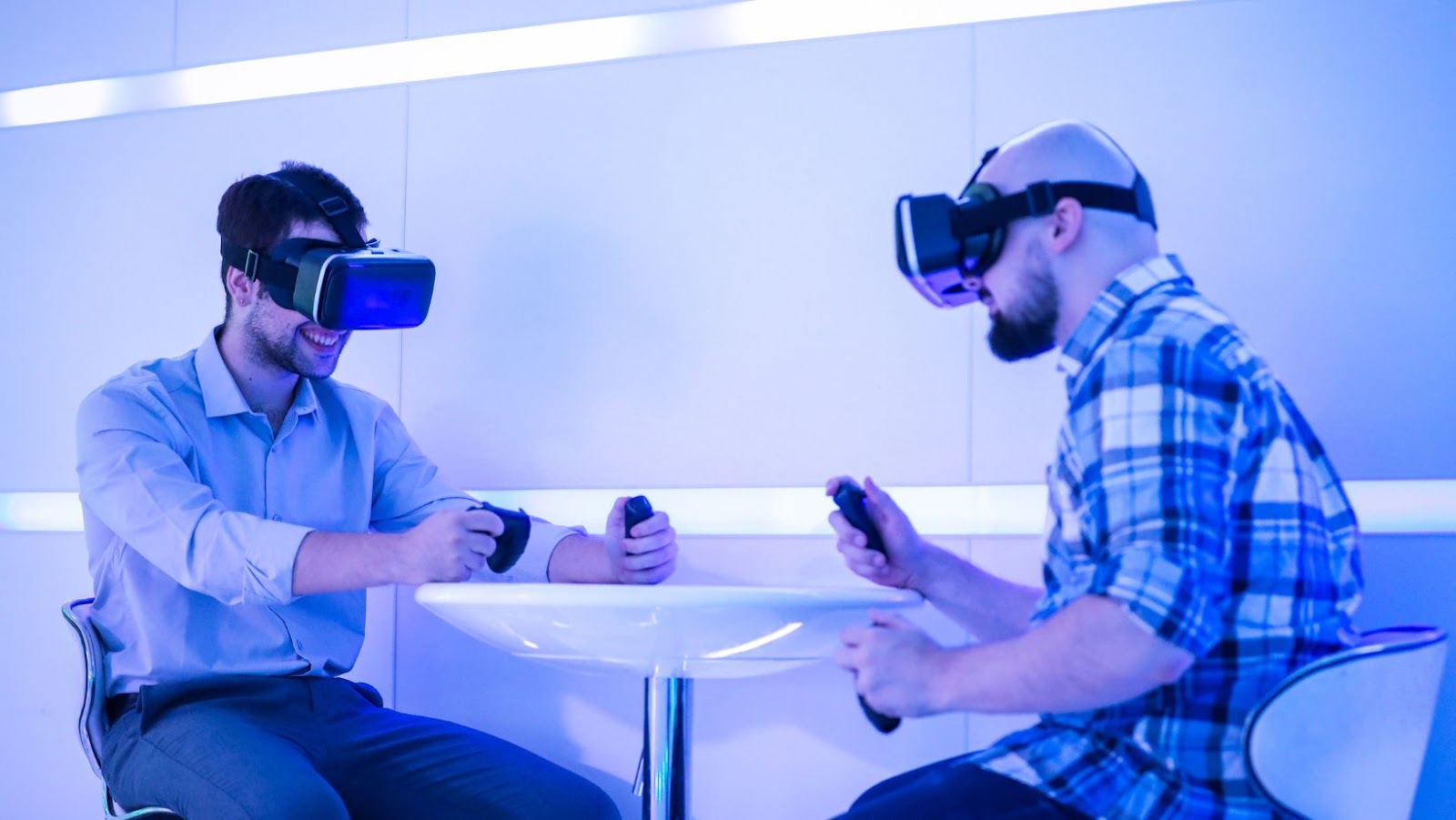Step into an exhilarating new realm where gaming meets reality – welcome to the world of VR eSports. This futuristic fusion of virtual reality technology and competitive gaming is radically transforming the eSports landscape, offering an immersive experience that’s as thrilling as it is revolutionary.
VR eSports isn’t just about playing games – it’s about living them. From the adrenaline rush of virtual battles to the camaraderie of team play, it’s a whole new level of engagement. So buckle up, because we’re diving deep into the captivating world of VR eSports, exploring its rise, its impact, and the exciting future it promises.
VR Esports
VR esports blend Virtual Reality technology with the intensity of competitive gaming. Players don virtual goggles and controllers, stepping into an immersive, three-dimensional digital battleground. The result is a fully immersive environment that truly encapsulates the player, creating a visceral gaming experience.
 History and Evolution
History and Evolution
The inception of VR esports can be traced back to the late 2010s, specifically with the advent of accessible, consumer-friendly VR headsets. The timeline counts 2016 as a significant landmark when the first Virtual Reality esports tournament was held. Games like Echo Arena and Onward effectively birthed the VR esports scene, sparking a revolution in the esports industry. Since then, the VR esports domain has seen progressive growth, burgeoning its own leagues and tournaments across the globe.
The Technology Behind VR Esports
Virtual reality technology’s integration into esports merges rapid technological advancement with non-stop gaming action. The sections below explore the hardware and game design principles shaping this immersive experience.
VR Hardware and Accessories
VR Esports predominantly relies on VR headsets and controllers. Headsets such as the Oculus Rift, HTC Vive, and PlayStation VR serve as the gateways to virtual gaming arenas. Offering 360-degree vision, high refresh rates, and realistic 3D spatial sound, these devices make esports more immersive than traditional gaming.
Movement in VR esports is tracked through controllers, as seen in the Oculus Touch or PlayStation Move. These devices translate physical motion into digital action, capturing the finesse of a player’s moves. An additional consideration is the play space. Room-scale VR offers the most immersive experience, providing users the freedom to walk around a constrained physical location translated into an unlimited virtual environment.
 Game Design and Development
Game Design and Development
Game design in VR esports is a meticulous craft, requiring starkly distinct considerations compared to traditional game design. Esports staples such as first-person shooters (FPS) and Multiplayer Online Battle Arena (MOBA) games are redesigned from the ground up for VR. Gravity-defying games like Echo Arena or strategic shooters like Onward exemplify this design paradigm.
Developers focus on seamless integration of player’s natural movements with in-game actions. For instance, reloading a gun in a game is no longer just hitting a button; players simulate the motion physically.
Moreover, technical requirements for VR game development are stringent. Aside from vivid graphics, game developers need to maintain a minimum of 60 frames per second (fps) to avoid motion sickness. They also need to minimize lag for real-time gaming response and multiplayer synchronization.
The evolution and adaptation of game design in VR esports attest to technology’s impact on the competitive gaming landscape. The resulting experience is not just a game; it’s an alternative reality.
 Major VR Esports Games and Leagues
Major VR Esports Games and Leagues
As the article has shown, VR eSports is a game-changer, literally and figuratively. With VR technology’s immersive capabilities, it’s transforming the landscape of competitive gaming. Games like Echo Arena and Onward have set the pace, demonstrating how VR can revolutionize eSports. They’ve spurred the creation of global leagues and tournaments, making VR eSports a force to be reckoned with.
The secret to this success lies in the tech behind the scenes. Oculus Rift and other VR hardware, paired with game design principles that prioritize natural movements and high frame rates, have made the VR eSports experience truly engaging.
It’s evident that VR eSports is not just a passing trend. It’s a new frontier in the gaming world, and its impact will be felt for years to come. As technology advances, so will the immersive possibilities of VR eSports, promising an exciting future for fans, players and developers alike.